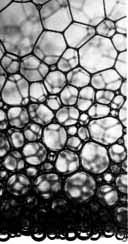MkD_scenario location03
October 25, 2008 · Leave a Comment
→ Leave a CommentCategories: Mirko Daneluzzo
AO_workinprogress_first script
October 25, 2008 · Leave a Comment
→ Leave a CommentCategories: Adam Orlinsky
MRF_first_Simulation
October 24, 2008 · Leave a Comment
→ Leave a CommentCategories: Vladimir Ivanov
MkD_robot concept03
October 20, 2008 · Leave a Comment
Robert Full on animal movement:
DESIGN SECRETS FROM NATURE:
1. Distribute control to smart parts – not all in brain, but in tuned feet legs and body;
2. Use hybrid solutions – integrated & robust;
3. Do NOT mimic nature, Be INSPIRED by Biology and use these novel principles with the best engineering solutions to make something better than nature.
The soft bag contains pockets to store the components of the chemical reaction. The “stomach”-membrane will squeeze the pockets to pump the fluids into the arms.
Soft membrane movement system options:
1. inner skeleton+pneumatic system
2. EAP tissue
About EAP:
Super Soldiers. Nano materials could provide future soldiers with super strength, protection against bioweapons and even a way to communicate covertly.
by David Talbot, Technology review, october 2002.
Electroactive Polymers or EAPs are polymers whose shape is modified when a voltage is applied to them. They can be used as actuators or sensors. As actuators, they are characterized by being able to undergo a large amount of deformation while sustaining large forces. Due to the similarities with biological tissues in terms of achievable stress and force, they are often called artificial muscles, and have the potential for application in the field of robotics, where large linear movement is often needed.
From Wikipedia, the free encyclopedia
Growth time + junction behaviour
→ Leave a CommentCategories: Mirko Daneluzzo
















